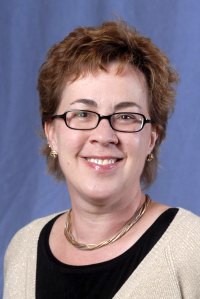GV professor investigates power of Kalamazoo Promise

Courtesy Photo / Michelle Miller-Adams Professor Michelle Miller-Adams
Jun 11, 2010
Dr. Michelle Miller-Adams, Grand Valley State University assistant professor of political science, has spent the last 4 1/2 years researching the Kalamazoo Promise scholarship, writing a book about it and helping other communities learn how to build similar programs.
The Kalamazoo Promise is a scholarship designed for graduates of the Kalamazoo Public Schools that was announced in November 2005 and is funded entirely from anonymous donors.
Students who attend KPS for kindergarten through 12th grade receive a 100 percent tuition/fees scholarship, while those who attend from ninth through 12th grade receive 65 percent (with a sliding scale in between). The program is set up to continue in perpetuity, and students have 10 years after graduation to use their scholarships.
Miller-Adams said she thought it was important that someone told the story of the origins of the scholarship and the impact that it made initially. After receiving a grant from the Upjohn Institute for Employment Research in Kalamazoo, she wrote her book and now works there as a visiting scholar in addition to her position at GVSU.
“I had the idea of writing a book about the Promise literally the day it was announced,” said Miller-Adams. “I realized that a program of this magnitude had the potential to transform Kalamazoo in many different ways — including giving tremendous opportunities for students, attracting new families into the school district, strengthening the economy and changing the public perception of the school district.”
She also said GVSU could benefit from recruiting the Promise scholarship recipients.
“Many Kalamazoo Promise recipients come from lower-income families and are the first in their families to go to college,” Miller-Adams said. She said GVSU could be the school to make sure these students are successful in college.
Other communities across the state have developed programs modeled on the Kalamazoo Promise, Miller-Adams said. Michigan recently auhorized 10 “Promise Zones” that replicate key features of the program.
Still, the fact the donors of the scholarship are anonymous is unique to Kalamazoo and has become rather atypical in today’s society, according to Joel Orosz, professor of philanthropic studies.
“It is certainly true that anonymous giving on the scale of the Kalamazoo Promise — millions of dollars per year for a period of many years — is unusual in the extreme and probably unprecedented,” said Orosz. “The desire for anonymity among the seven donors is sensible given the circumstances. If their identities were known, it would open them up to a torrent of requests for funding … In fact, the identities of the donors, if known, could divert the focus from where it belongs, namely on the Promise itself, and the success of the kids it supports.”
The only downside, he said, is that anonymity makes it so the donors cannot advocate for it in Kalamazoo nor can they try to recruit other potential donors to imitate their generosity in other communities.
A native of California, Miller-Adams moved to Michigan in 1994 and has been teaching at GVSU since 2006. Currently, she lives in Kalamazoo with her daughter and commutes to GVSU three times a week, teaching courses in international political economy and international relations as well as sections in the capstone seminar for political science majors.
To learn more about Miller-Adams and her book, visit http://michellemilleradams.com, or to read the first chapter online, go to http://www.upjohninstitute.org/publications/ch1/pop.pdf.























